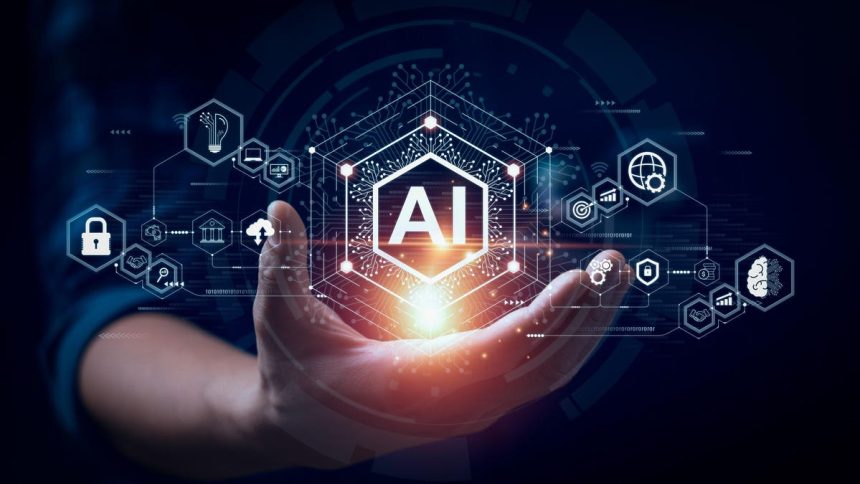AI will transform marketing yet again, but humans will continue to reign supreme as advertising becomes smarter and more effective. Today’s consumers are bombarded with thousands of ads they mostly ignore, crammed into passing digital content on their phones; most of them are poor in design and execution and thus barely viewed.
AI will streamline marketing jobs. But computers act only on what they learn about the past, while people have imaginations that take leaps that cannot be duplicated by programs. This becomes even truer once all teams will be equipped with similar technology. This means that while Tier II content will be taken over just as sensors have taken over toll collection, Tier I content will require even greater minds to get a competitive edge. Here are 10 AI-based mini-revolutions within grasp.
Voice, Not Links
Perhaps the biggest change in marketing will be the shift from links to spoken or written speech as the primary means of person-to-computer communication. This will upend Google and change how we create consumer experiences. Today we tap half sentences into search bars but in the near future we will follow the lead of every science fiction show and primarily talk to our machines and expect them to understand us. This is at the essence of the leap forward from the crude Alexa voices to deeper communication and interaction. This is where marketers have to rethink how they get to the consumer.
Video and Audio Creation
The production industry will be remade as a lot of what used to be generated through shoots will instead be imagined and created by AI from existing content. This will affect everything from storyboard creation to finished spots. You can ask for a baby on a tire and voila, here it is; this is likely to have the biggest effect on marketing production jobs and needs.
“Human” Connection
Perhaps the biggest change made possible by generative AI is that computers will be able to have deeper “relations” with people. The creation of marketing characters will be completely changed from appearing on a poster or a video to interacting and connecting with people at a frighteningly deep level. People will come to rely on their bot for advice on everything from who they can trust to who they should date to what they should buy. Think of these bots as dogs that can talk.
Research and Analysis
AI will take the first pass through data books combing through hundreds of thousands of numbers. Humans will still have to package the analysis up to extract the most valuable insights but AI will get you 85% of the way there in record time. We are already using AI to interpret open-ended comments and analyze focus groups.
Media Buying
The hallmark of digital advertising is “hunting and testing,” and that is where AI tends to shine. Instead of doing the actual testing, it uses predictive algorithms based on how similar content has performed. Systems will become a mix of “test and predict”; effective AI here requires even more data on consumers to match the right ad to the right person at the right time. We are already deploying these technologies.
Targeting
AI will play a similar role here in helping to refine targeting on an automated basis. Computers tend to be good not great at targeting as they can find similar patterns but not come up with insights in the same way a human does. Finding people with expiring leases of similar cars is hard for a computer to reason out compared to a person who can more easily isolate that group as a prospective target.
Content Recommendation
Just like social media and entertainment platforms, advertisers and marketers will be able to develop algorithms for content recommendation using AI. The biggest companies will be able to run custom GPTs on their internal data to create solutions that work best for them. At Stagwell, we are creating Smart Assets – a way of pre-testing and classifying assets based on AI that will revolutionize how these assets are used.
Press Release Creation
Stagwell’s PRophet product is already creating the first draft of a press release. The entire process from release and social content creation to finding likely journalists and pitching them is being automated. This will make media communications jobs far more efficient in their ability to get the message out for their clients.
Automated Email Creation
Here there will be a contest between people and machines – who will be better at creating messages for consumers. Computers do a good job but true excellence has always evaded them. And the effectiveness of AI-crafted email will depend on the quality of the proprietary data we have on people and how they have reacted to content in the past. As with targeting, expect these processes to be a mix, with AI doing the simple emails but crafty humans still generating Tier I content.
Pitch Automation
One thing that marketers will cheer is using AI to create the basics of pitch documents. AI will be able to analyze the requests, dig deep into the data of all past pitches, construct the bones of the next pitch and handle all of the endless annoying compliance. “My bot will talk to your bot” will become an increasing reality when it comes to fulfilling procurement requests so that the team can focus on the “big idea.”
The next generation of AI here is a big development that burst upon the scene almost unexpectedly to shake up how we have been using computer power, and its adoption in marketing firms will likely decide who wins and who loses in the next decade.
Read the full article here










